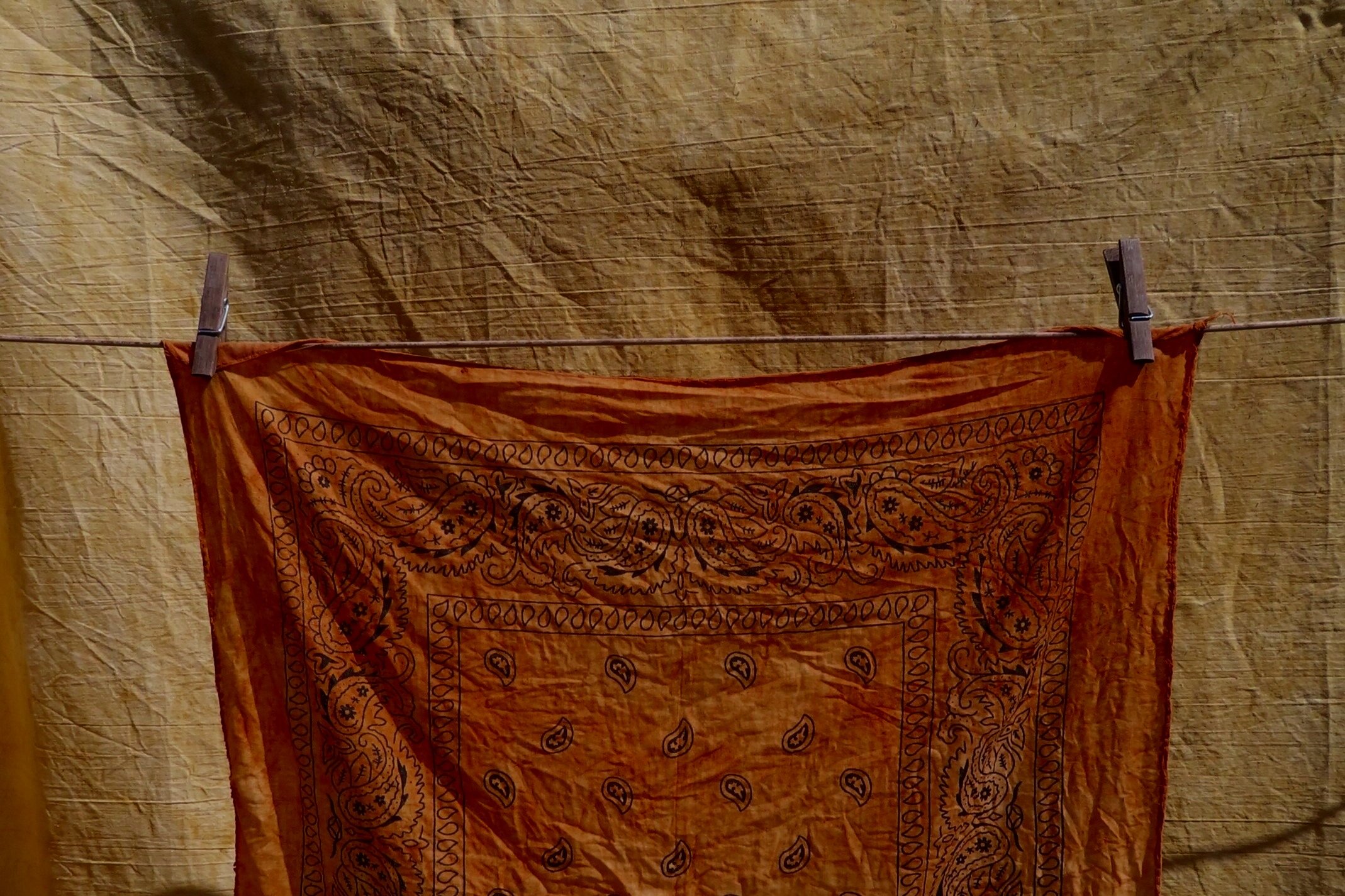
REP YOUR WHENUA
WITH DYED TEXTILES
Staining textiles with soils, silts and clays
nā Lanae Cable
NUKU LIVE Workshop 2021
Being able to wear and be wrapped in your whenua is wholesome. When I started dying and staining bandanas, it was to archive the pigments we found on our “KR Fridays” and also to test the ability of the colour, to see if it would stay on fabric. I chose bandanas because it's an accessible piece of fabric (found at variety/$2 shops) but also because it was wearable straight away with no sewing needed.
Our tīpuna would adorn themselves in kōkōwai, sometimes head to toe. This probably isn’t so practical for us now (if you want to rock that look though, I'm so here for it). I have dyed linen clothing, bucket hats, even undies and my sister wore the hottest top to “One Love” made out of whenua stained bandanas. When I wear dyed/stained pieces of clothing, I feel like I'm being cradled by my whenua, tīpuna and repping my hapū/iwi.
What if we started wearing colours of our whenua again, as a way to identify where we are from. “Ohh tēna koe, they must be from Pūkeko with that orange” or even “I’ve seen that grey at Sharpies, they must be from up the hills”. As Māori, we know our identity lies in our whakapapa to place and people. Wearing and adorning yourself with colour that comes from those places, maybe somewhere your tīpuna also gathered pigments from, maintains a relationship to those cultural landscapes and our connection as mana whenua.
Learn how to use whenua to colour your kākahu here
NUKU LIVE Workshop 2021

